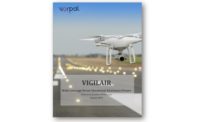System Sensor, St. Charles, Ill., a manufacturer of fire detection and notification devices, introduced a white paper that addresses concerns about the correct spacing and candela settings of strobes in certain types of facilities, such as retail occupancies. The white paper, titled “Visible Signaling in Large Spaces,†cites the recommendation by the National Fire Protection Association’s (NFPA) Technical Committee on Notification Appliances for Fire Alarm Systems to clarify the design requirements of signaling systems in retail occupancies. The committee’s recommendation will be published in Annex A of the 2007 edition of NFPA 72 National Fire Alarm Code.
The white paper states that a notification system may have gaps in coverage if installed to the specifications of NFPA 72, which allows notification with either direct or indirect viewing of light from visible signaling appliances. However, the testing that led to this requirement was done in areas with lighting levels far below those used in retail occupancies. This means that the signal-to-noise ratio (the illumination from the strobe compared with the illumination of the space without the strobe) in retail is much lower, thereby reducing the effect of indirect signaling. Because of this, some Authorities Having Jurisdiction require strobe coverage in excess of the prescriptive tables outlined in NFPA 72.
For more information on the white paper, visitwww.systemsensor.com/pdf/VisibleSignalingWP.pdfor contact System Sensor at (800) 736-7672.
White Paper Explains Strobe Coverage Beyond NFPA 72
Looking for a reprint of this article?
From high-res PDFs to custom plaques, order your copy today!







